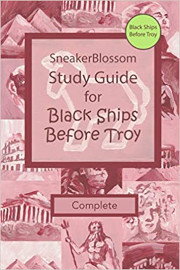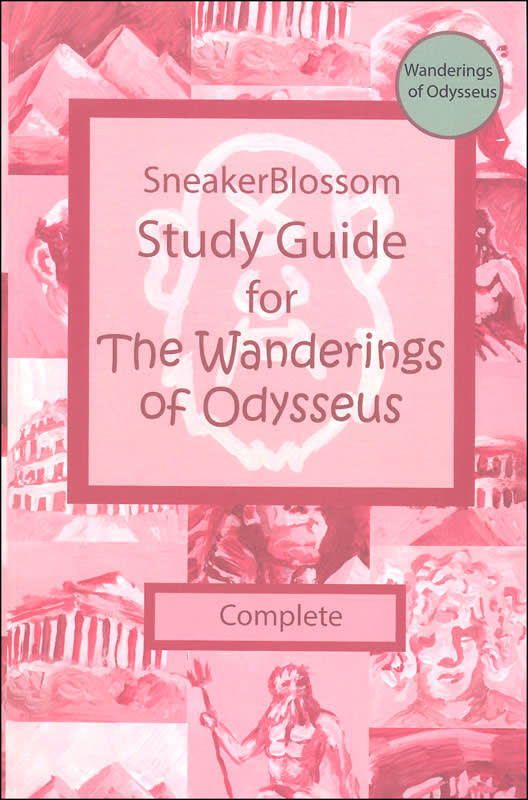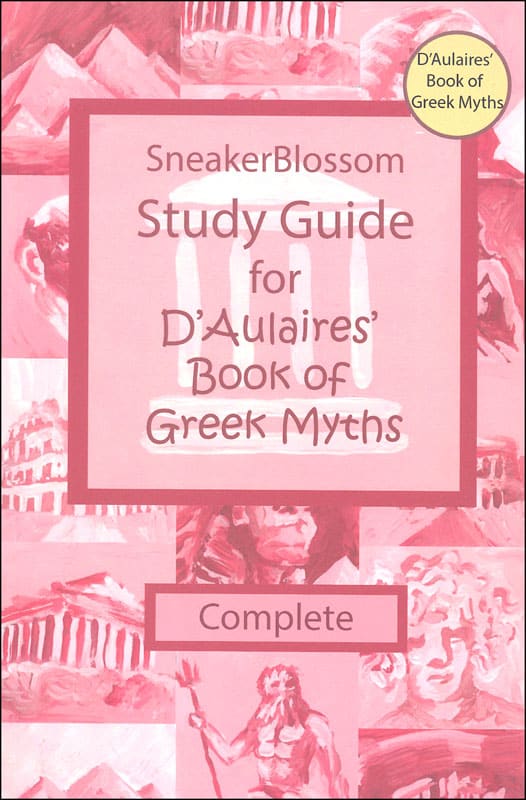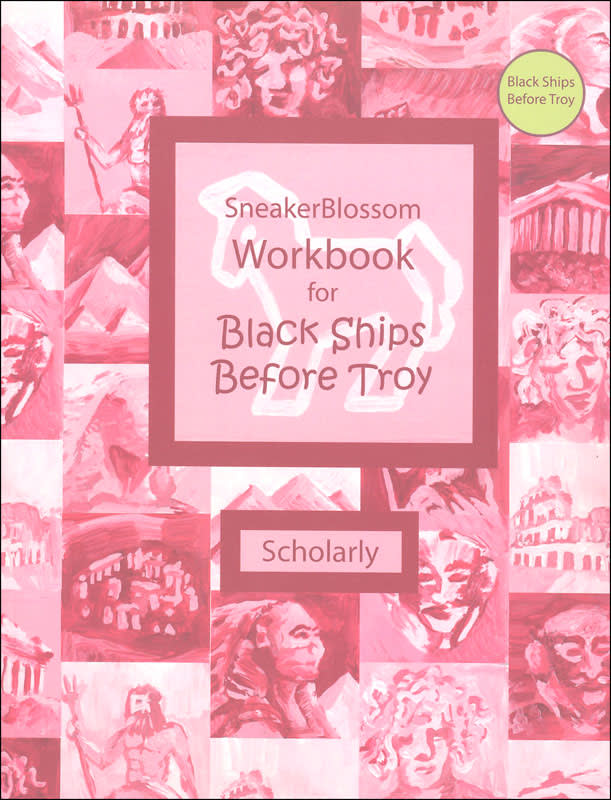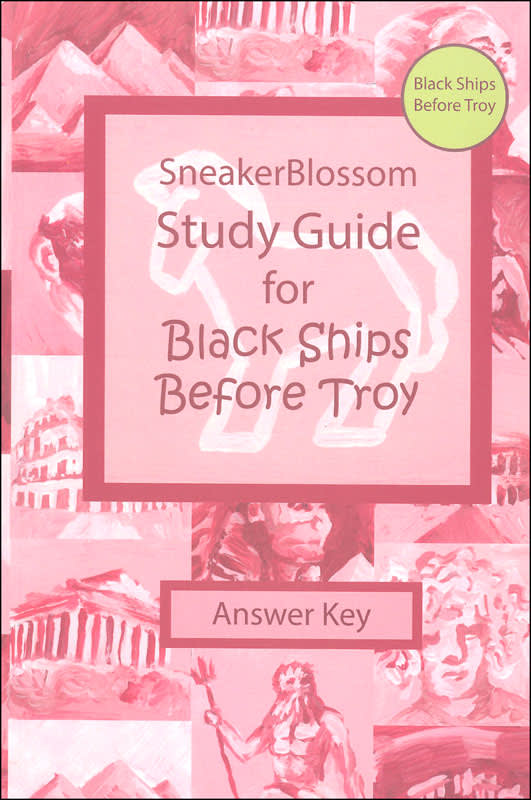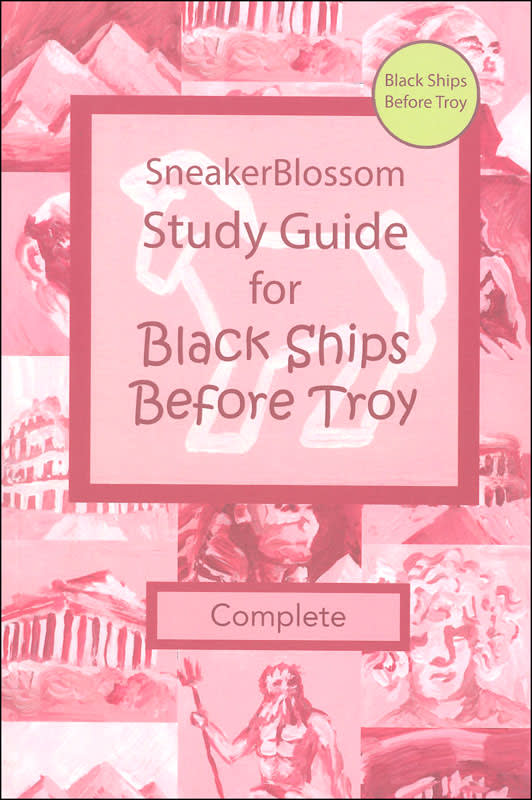SneakerBlossom study guides are great for those pursuing a classical education from a Christian worldview, and they will also work well for those who don’t want to use the Christian worldview component or for those not educating in a classical manner. You can pick and choose from the books to be studied and the ways that students will study them.
Thus far, there are study guides for eight literary works written about the period of ancient Greece and Rome and the medieval period. The literary works are mostly retellings of classical literature that are age appropriate for children in the elementary grades through high school. The titles of the works about ancient Greece and Rome for which there are study guides are:
Black Ships Before Troy by Rosemary Sutcliff
The Aeneid for Boys and Girls by Alfred J. Church
The Wanderings of Odysseus by Rosemary Sutcliff
Atticus the Storyteller's 100 Greek Myths by Lucy Coats & Anthony Lewis
D'Aulaires' Book of Greek Myths by Edgar & Ingrid D'Aulaire
Augustine: The Farmer's Boy of Tagaste by P. & T. De Zeeuw
You probably noticed that the first five works are related to ancient Greece, and the last, which is about Augustine of Hippo, is a biography that takes place in the Mediterranean region during the time of the Roman empire.
The next set of study guides addresses medieval literature. The sets of guides are available for the first two literary works listed below, with those for Beowulf soon to be published.
Stories of Roland Told to the Children by H.E. Marshall
The Canterbury Tales translated and adapted by Barbara Cohen
Stories of Beowulf Told to the Children by H.E. Marshall
For each literary work, SneakerBlossom has resources to choose from to suit different ages, situations, and learning approaches. While the SneakerBlossom series is called study guides, these books are actually a mixture of different types of books: a questions-only book, an answer-key book, a "complete" study guide with almost all of the questions and answers, and three or four workbooks. All of these present different options for pairing a source for questions and activities with a source for answers.
These resources provide options that make them very flexible and usable for students from about second grade through high school. You can read the same literary work aloud with all of your children, then use the activities from whichever SneakerBlossom book is appropriate for each child.
All of the SneakerBlossom books are print items except the question-only books, which are only available as PDFs.
I will describe the elements within these books, then let you know which elements are in which books. Note that the books cover the material in each literary work a chapter at a time for most works, and story by story for works such as D’Aulaires’ Book of Greek Myths.
Elements in the Sneaker Blossom Books
Character Identification: This is a list of characters introduced in the chapter or story. They are identified for levels A, B, or C, indicating decreasing levels of importance. Level A characters would be the most important characters, ones that all students should be able to identify. Students write brief descriptions of each character. To keep things easier, you can require students to write about only level A characters, but you can add level B or C characters if you want to make it more challenging.
Character Index: A reference resource that lists all of the characters in the book, it shows the chapters in which each one appears, the type of character, the level of difficulty (A, B, or C), and a brief description of each character.
Map Work: A few maps are included as part of the activities so that students can trace journeys or identify locations. Map activities also have levels of importance: A, B, or C.
Comprehension Questions - simplified: These are primarily multiple-choice questions with a few fill-in-the-blank questions. The questions address the same points as the more-challenging questions, but the format makes them easier to answer.
Comprehension Questions - more challenging: These are open-ended questions for either discussion or written responses.
Suggested Lines of Discussion to Pursue: These are open-ended questions that require both deeper thinking than the other types of questions and the application of a Christian worldview. For example, “Compare and contrast the Land of the Dead with the Christian beliefs about Heaven and Hell” (SneakerBlossom Study Guide for The Wanderings of Odysseus: Complete, p. 22). You can skip these if you do not want the Christian worldview aspect of the study.
What is in Each Book
Parents who want all of the elements can purchase either the book titled Complete or the two books that are titled Question Only and Answer Key. Students can be given assignments directly from these books, but it should be easier to give students one of the workbooks so that they don’t have to recopy information before doing their work. Any of the workbooks can be used with only the Answer Key book.
Study Guide: Complete
All of the elements, except the simplified questions that are presented in the Relaxed Workbook, are in Study Guide: Complete. Intended for use primarily by the teacher, Complete has all of the answers in the last half of the book. You could work with only this book, but you would have to write out (or have students copy from it) the names of characters, the mapwork, and any questions for which you want students to write out the answers. (Free PDFs of the maps are available by email from the publisher if you need them.)
Study Guide: Questions Only
The Questions Only books are available only as PDFs. They have the lists of characters for each level, mapwork, the more-challenging questions, and the Suggested Lines of Discussion. (Add the separate Answer Key book and you have all of the elements of the Complete book.) The Questions Only books are useful if you want to give them to students to work from without having answer keys available to them.
Workbook: Relaxed
The Relaxed version of the workbook presents the simplified questions and lists only level A characters and level A map work. It has a character index at the back showing information for only level A characters. The format and content make this a good choice for younger students.
Workbook: Studious
The Studious version of the workbook lists characters from levels A and B and map work for level A. It has only the more-challenging comprehension questions. It has a character index for level A and B characters.
Workbook: Scholarly
The Scholarly version of the workbook lists all three levels of characters. Near the back of the book, the character index has charts with all of the information for each character, except their description. These multi-page charts have space for students to write their own descriptions into the workbook. Map work includes all levels. The workbook includes the more-challenging comprehension questions, with blank lines for students to write out their answers. It also has the Suggested Lines of Discussion, although they have the label, “Questions for Research, Discussion and Essays.” If you choose to have students write out their responses and thoughts for these questions, they will need to do so outside of the workbook since there is not enough space.
Workbook: Comfortable
As I write this review, this workbook is available only for Black Ships Before Troy, Stories of Roland Told to the Children, andThe Canterbury Tales. The workbooks feature a dyslexia-friendly font which should make them easier for some students to read. These workbooks include level A map work and character indexing, the more-challenging comprehension questions, and the “Questions for Research, Discussion and Essays.” The character indexing uses a cut-and-paste approach which is easier than if students had to do the writing.
Study Guide: Answer Key
The Answer Key book, like the answer key within Study Guide: Complete, includes answers for all types of activities. These include answers to multiple-choice questions, suggested answers for comprehension questions, possible responses for the Suggested Lines of Discussion, the complete character index, and an alphabetical list of map locations (covering all levels).
Religious Point of View
The Christian worldview aspect in the SneakerBlossom books is broadly Christian, although it reveals a slight favoritism for Protestantism on rare occasions. It is important to note that the literary work, Augustine: The Farmer's Boy of Tagaste, was written from a Protestant point of view and has a couple of comments disparaging the Catholic Church at the beginning and the end. Study Guide: Complete for the work mentions this and encourages parents to use those comments as points of discussion.
Summary
There are many study guides for literature available, but none of them have the flexibility of the SneakerBlossom books. In addition, the biblically based worldview questions are excellent for helping students learn how to analyze literature from a Christian perspective.




